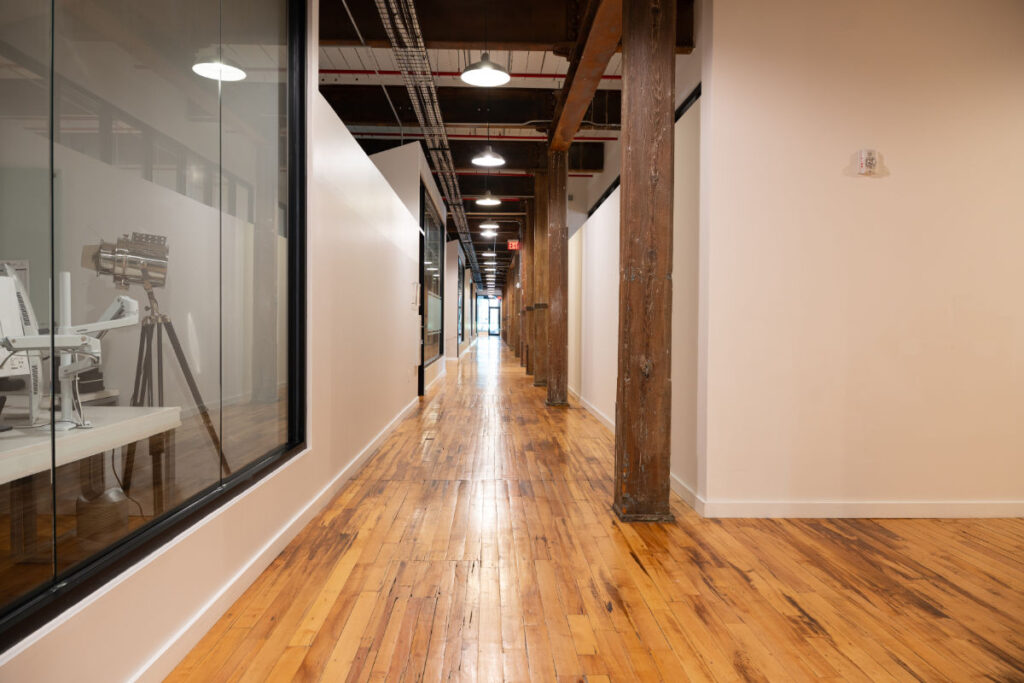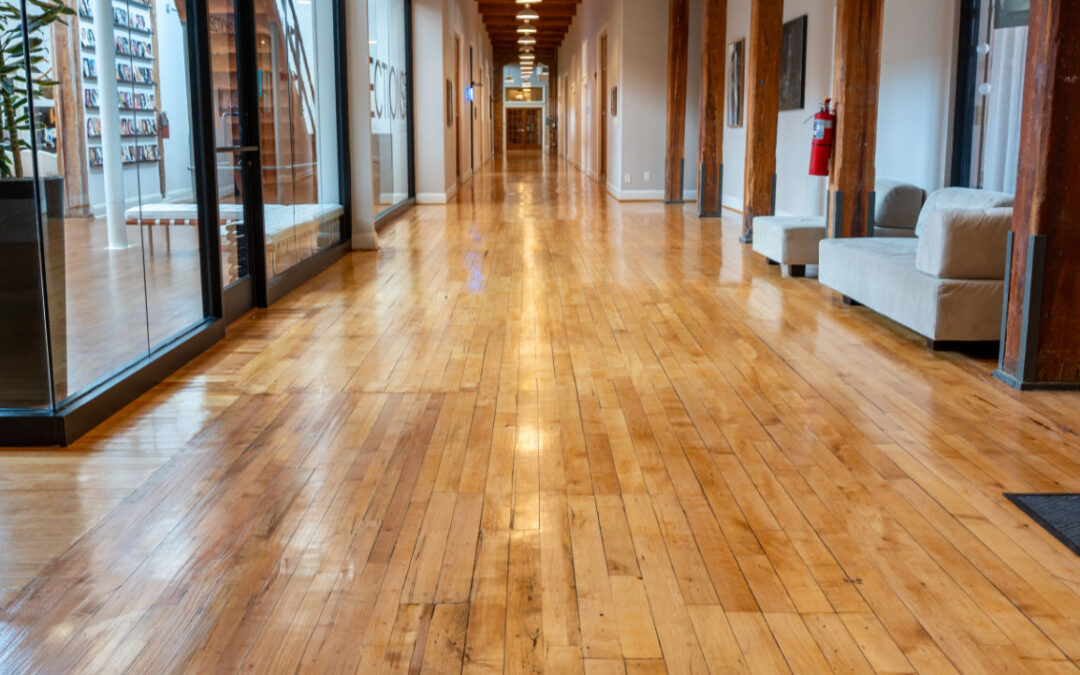We’ve started touring some of our regular cleaning client facilities for photos, and the secondary value of that has been a chance to appreciate each facility’s unique materials. (And how those materials have responded to regular maintenance.)
Facilities like Revolution Mill have century old wood floors — still original materials. As a historic building it’s important to preserve those materials as long as possible, since the character is tied to those materials.
After A Clean and A Wax Buffing, Here’s What You Can Expect
originally built in 1898 as the South’s first flannel mill. At its peak, it helped fuel the textile industry that shaped the region’s economy and culture for decades. The wood floors you see today aren’t just functional — they’re the same ones walked on by generations of mill workers over a century ago.
These photos were taken shortly after a clean and wax buffing service. The results speak for themselves: the depth, warmth, and texture of century-old heart pine brought back to life with a little care and consistency.



Here Are Some Stats On What Floor Treatment Like This Does For You
Revolution Mill management has had a strong care for maintenance for many years, even before we became involved. But the success of maintaining the look here isn’t a one-off.
The NWFA reports that well maintained wood floors can last over 100 years. Other reports state that good maintenance extends a wood floor’s lifespan by 50%. For buildings that see heavy foot traffic every day, that’s just smart business.
And the advantages go beyond lifespan. Wood floors already outperform many other materials when it comes to air quality: they don’t trap dust, pollen, or allergens like carpet does. But when you pair that with routine vacuuming and deep cleaning, you prevent minor buildup from ever becoming noticeable in the first place.
The result is natural character, and one that still looks vibrant decades later.
What Makes Older Wood Floors Worth Preserving
The wood floors at Revolution Mill aren’t just a design feature — they’re a link to a time when building materials were sourced and crafted very differently than they are today.
Many of the boards were cut from old-growth trees, which grew slowly over decades or even centuries. That slower growth created denser, tighter grain patterns that give historic wood its durability, character, and warmth. These materials weren’t just mass-produced — they were often hand-selected and installed with craftsmanship that’s difficult (and costly) to replicate today.
In fact, much of the lumber available now comes from fast-growth forests, which means it lacks the same density and aging properties. It’s lighter, softer, and more prone to damage over time. (And it certainly doesn’t carry the same architectural legacy.)

